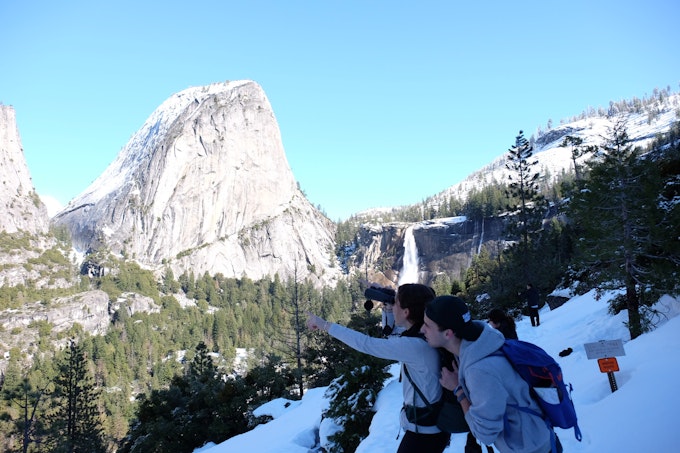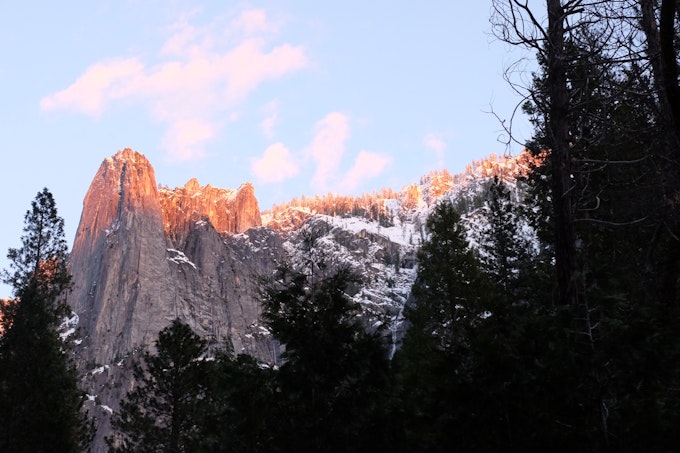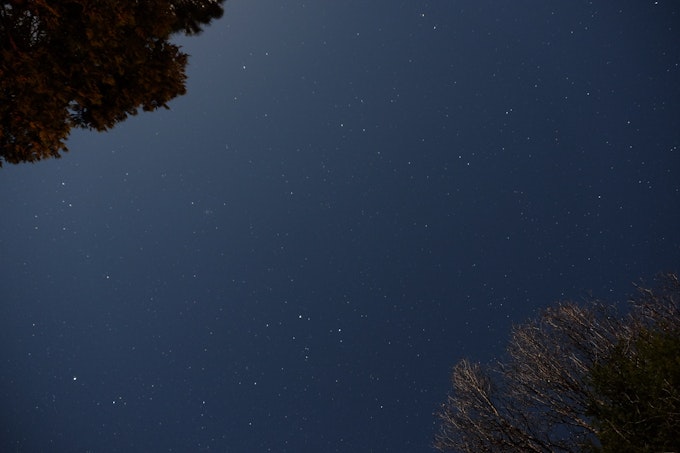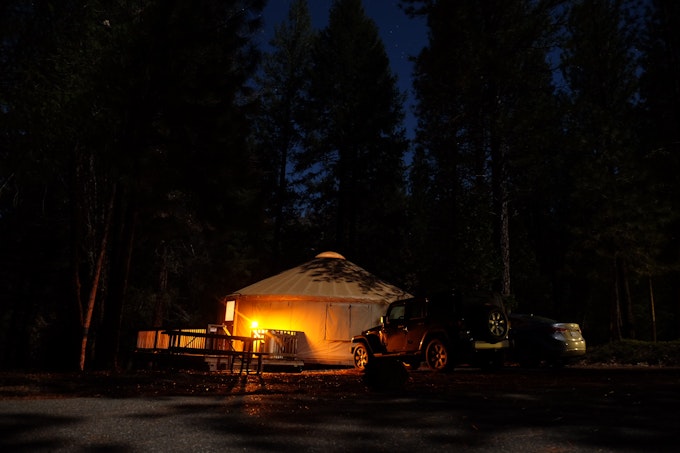5 Things to Know Before Witnessing Yosemite's Firefall
Every winter, a handful of lucky individuals get to witness one of Yosemite’s most awe-inspiring events.
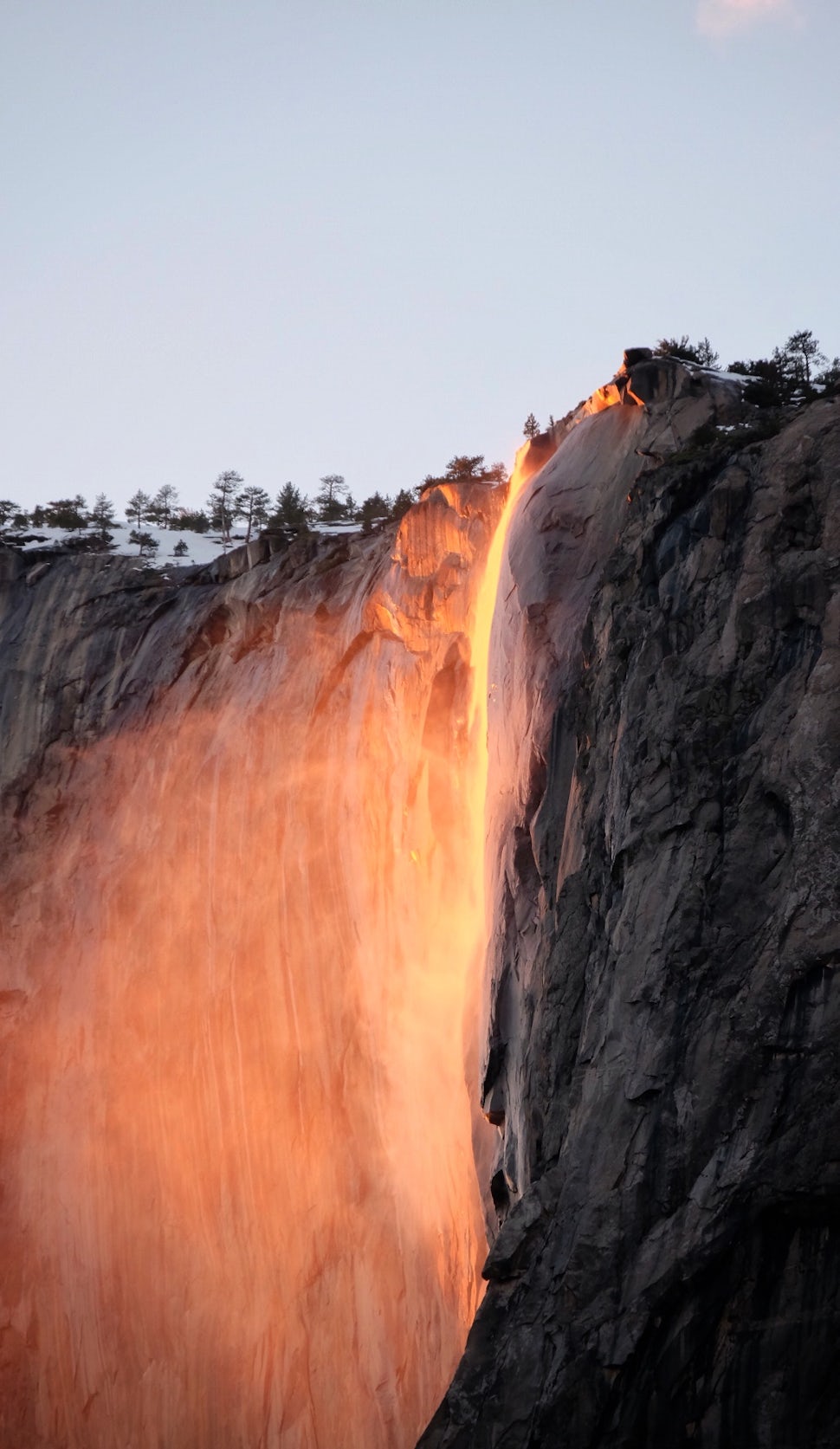
In mid-February, the setting sun is at the perfect angle to illuminate Horsetail Fall. When the weather conditions are ideal, the waterfall glows orange and red—creating a “firefall” illusion. Into the Wild took a group of students to Yosemite the weekend of Firefall, and here are some things we have learned!
1. Be Weary of Traffic
When leaving the Firefall to return to camp, our trip leaders discovered that highway 120 was closed. The team ended up taking a 2 hour roundabout way back to camp—so be sure to bring snacks and put extra gas in your car (and check out road closures before driving to the view)!
2. Photographers Galore
Hoards of photographers were scattered around the road, all searching for the best view and shot of the Firefall. While the Firefall is an amazing spectacle, and definitely one to be caught on camera, it is also important to live in the moment. After you secure that perfect shot, sit back, relax, and enjoy the view and those around you.
3. Be Flexible with Plans
Our plans got a little scattered when the trip leaders discovered that Four Mile Trail was closed. The leaders quickly devised another plan: the Mist Trail to Nevada Falls. The hike was amazing, and the sunny weather allowed for amazing views of Half Dome and the waterfall!
4. The Greatness of Mother Nature
Mother nature is truly a force of power and beauty—and we are just individuals fortunate enough to be living on this amazing planet. We have a duty to protect and preserve the ecosystems on our planet, and we must take actions that are sustainable. Practice “leave no trace” methods whenever you are outside. Into the Wild has recently taken a pledge to become carbon neutral - check it out here: http://climateneutralnow.org/P...
5. Yurts are Never a Bad Idea
We booked yurts just outside of the 120 Yosemite Entrance at Yosemite Lakes Campground, and we loved it! Winter camping, especially in weather-variable situations, may not be the best idea—particularly when taking students who might be camping for the first time. The yurts were spacious, and allowed for a warm and dry night of sleep.
A huge thank-you to our leaders Caroline, Christian, and Zach for helping write this story and providing pictures.
We want to acknowledge and thank the past, present, and future generations of all Native Nations and Indigenous Peoples whose ancestral lands we travel, explore, and play on. Always practice Leave No Trace ethics on your adventures and follow local regulations. Please explore responsibly!
Do you love the outdoors?
Yep, us too. That's why we send you the best local adventures, stories, and expert advice, right to your inbox.


